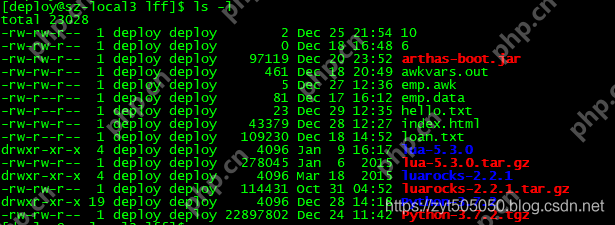c++++中可以使用aes和rsa算法实现加密和解密:1. aes是一种对称加密算法,使用相同的密钥进行加密和解密。2. rsa是一种非对称加密算法,适用于混合加密系统。通过示例代码展示了如何使用openssl库实现这些算法。

引言
在编程世界中,数据的安全性总是备受关注。加密和解密算法是保护数据隐私和安全的关键手段。我深知,掌握这些技术不仅能提升代码的安全性,还能在开发过程中避免一些常见的安全陷阱。这篇文章将带你深入了解c++中实现加密和解密算法的艺术和科学。通过阅读这篇文章,你将学会如何使用C++实现常见的加密和解密算法,并理解其中的原理和最佳实践。
基础知识回顾
在我们深入探讨C++中的加密和解密算法之前,让我们先回顾一些基础知识。加密是一种将数据转换为难以理解的形式的过程,而解密则是将其还原为原始形式的过程。常见的加密算法包括对称加密(如AES)和非对称加密(如RSA)。在C++中,我们可以利用标准库和第三方库来实现这些算法。
核心概念或功能解析
加密和解密的定义与作用
加密的核心目的是保护数据的隐私性和完整性。通过加密,我们可以确保即使数据被截获,攻击者也难以理解其内容。解密则是将加密的数据恢复为可读形式的过程。加密和解密在C++中可以使用多种算法实现,例如AES(高级加密标准)和RSA(非对称加密算法)。
立即学习“C++免费学习笔记(深入)”;
工作原理
让我们以AES加密为例,来看一下它的工作原理。AES是一种对称加密算法,使用相同的密钥进行加密和解密。AES的加密过程涉及多个轮次的替代和置换操作,每个轮次都使用不同的子密钥。解密过程则逆向执行这些操作。
以下是一个简单的AES加密和解密示例:
#include <iostream> #include <openssl> // 加密函数 void encrypt(const unsigned char* plaintext, int plaintext_len, unsigned char* key, unsigned char* iv, unsigned char* ciphertext) { EVP_CIPHER_CTX* ctx; int len; int ciphertext_len; // 创建并初始化加密上下文 ctx = EVP_CIPHER_CTX_new(); EVP_EncryptInit_ex(ctx, EVP_aes_256_cbc(), NULL, key, iv); // 加密 EVP_EncryptUpdate(ctx, ciphertext, &len, plaintext, plaintext_len); ciphertext_len = len; // 处理最后一块数据 EVP_EncryptFinal_ex(ctx, ciphertext + len, &len); ciphertext_len += len; // 清理上下文 EVP_CIPHER_CTX_free(ctx); } // 解密函数 void decrypt(const unsigned char* ciphertext, int ciphertext_len, unsigned char* key, unsigned char* iv, unsigned char* plaintext) { EVP_CIPHER_CTX* ctx; int len; int plaintext_len; // 创建并初始化解密上下文 ctx = EVP_CIPHER_CTX_new(); EVP_DecryptInit_ex(ctx, EVP_aes_256_cbc(), NULL, key, iv); // 解密 EVP_DecryptUpdate(ctx, plaintext, &len, ciphertext, ciphertext_len); plaintext_len = len; // 处理最后一块数据 EVP_DecryptFinal_ex(ctx, plaintext + len, &len); plaintext_len += len; // 清理上下文 EVP_CIPHER_CTX_free(ctx); } int main() { unsigned char plaintext[] = "Hello, World!"; unsigned char key[] = "0123456789abcdef0123456789abcdef"; unsigned char iv[] = "0123456789abcdef"; unsigned char ciphertext[128]; unsigned char decryptedtext[128]; int plaintext_len = strlen((char*)plaintext); int ciphertext_len; // 加密 encrypt(plaintext, plaintext_len, key, iv, ciphertext); ciphertext_len = plaintext_len + AES_BLOCK_SIZE; // 打印加密后的数据 std::cout <p>这个示例使用了OpenSSL库来实现AES加密和解密。需要注意的是,实际应用中应该使用更安全的密钥生成和管理方法。</p> <h2>使用示例</h2> <h3>基本用法</h3> <p>上面的代码展示了AES加密和解密的基本用法。加密函数encrypt将明文转换为密文,而解密函数decrypt则将密文还原为明文。每个函数都需要提供密钥和初始化向量(IV),以确保加密的安全性。</p> <h3>高级用法</h3> <p>在实际应用中,我们可能需要处理更复杂的加密需求。例如,我们可以实现一个混合加密系统,结合对称加密和非对称加密的优势。以下是一个简单的示例:</p> <pre class="brush:cpp;toolbar:false;">#include <iostream> #include <openssl> #include <openssl> #include <openssl> // 生成RSA密钥对 void generateRSAKeyPair(RSA** publicKey, RSA** privateKey) { BIGNUM* bne = BN_new(); BN_set_word(bne, RSA_F4); *publicKey = RSA_new(); *privateKey = RSA_new(); RSA_generate_key_ex(*privateKey, 2048, bne, NULL); *publicKey = RSAPublicKey_dup(*privateKey); BN_free(bne); } // 使用RSA公钥加密AES密钥 void encryptAESKey(const unsigned char* aesKey, int aesKeyLen, RSA* publicKey, unsigned char* encryptedKey, int* encryptedKeyLen) { *encryptedKeyLen = RSA_public_encrypt(aesKeyLen, aesKey, encryptedKey, publicKey, RSA_PKCS1_OAEP_PADDING); } // 使用RSA私钥解密AES密钥 void decryptAESKey(const unsigned char* encryptedKey, int encryptedKeyLen, RSA* privateKey, unsigned char* decryptedKey, int* decryptedKeyLen) { *decryptedKeyLen = RSA_private_decrypt(encryptedKeyLen, encryptedKey, decryptedKey, privateKey, RSA_PKCS1_OAEP_PADDING); } int main() { RSA* publicKey = nullptr; RSA* privateKey = nullptr; generateRSAKeyPair(&publicKey, &privateKey); unsigned char aesKey[] = "0123456789abcdef0123456789abcdef"; unsigned char iv[] = "0123456789abcdef"; unsigned char encryptedKey[256]; int encryptedKeyLen; // 使用RSA公钥加密AES密钥 encryptAESKey(aesKey, sizeof(aesKey) - 1, publicKey, encryptedKey, &encryptedKeyLen); // 打印加密后的AES密钥 std::cout <p>这个示例展示了如何使用RSA加密AES密钥,从而实现一个混合加密系统。这样的系统结合了对称加密的高效性和非对称加密的安全性。</p> <h3>常见错误与调试技巧</h3> <p>在实现加密和解密算法时,常见的错误包括密钥管理不当、使用弱密钥、忽略初始化向量(IV)等。以下是一些调试技巧:</p> <ul> <li> <strong>密钥管理</strong>:确保使用安全的密钥生成和存储方法,避免使用硬编码的密钥。</li> <li> <strong>错误处理</strong>:在加密和解密过程中,添加适当的错误处理代码,确保程序在遇到错误时能够优雅地处理。</li> <li> <strong>调试日志</strong>:在调试过程中,添加详细的日志记录,以便跟踪加密和解密的每个步骤。</li> </ul> <h2>性能优化与最佳实践</h2> <p>在实现加密和解密算法时,性能优化和最佳实践同样重要。以下是一些建议:</p> <ul> <li> <strong>使用<a style="color:#f60; text-decoration:underline;" title="硬件加速" href="https://www.php.cn/zt/39732.html" target="_blank">硬件加速</a></strong>:许多现代CPU支持硬件加速的AES加密,可以显著提高性能。</li> <li> <strong>批量处理</strong>:在处理大量数据时,考虑批量加密和解密,以减少加密和解密的开销。</li> <li> <strong><a style="color:#f60; text-decoration:underline;" title="代码可读性" href="https://www.php.cn/zt/55554.html" target="_blank">代码可读性</a></strong>:确保代码的可读性和可维护性,使用清晰的注释和命名 conventions。</li> </ul> <p>在我的开发经验中,我发现加密和解密算法的实现不仅需要技术上的精通,还需要对安全性有深刻的理解。在实际应用中,选择合适的加密算法和实现方式是至关重要的。希望这篇文章能为你提供一些有用的见解和实践指导,帮助你在C++中实现高效且安全的加密和解密算法。</p></openssl></openssl></openssl></iostream>
© 版权声明
文章版权归作者所有,未经允许请勿转载。
THE END
喜欢就支持一下吧
相关推荐



















